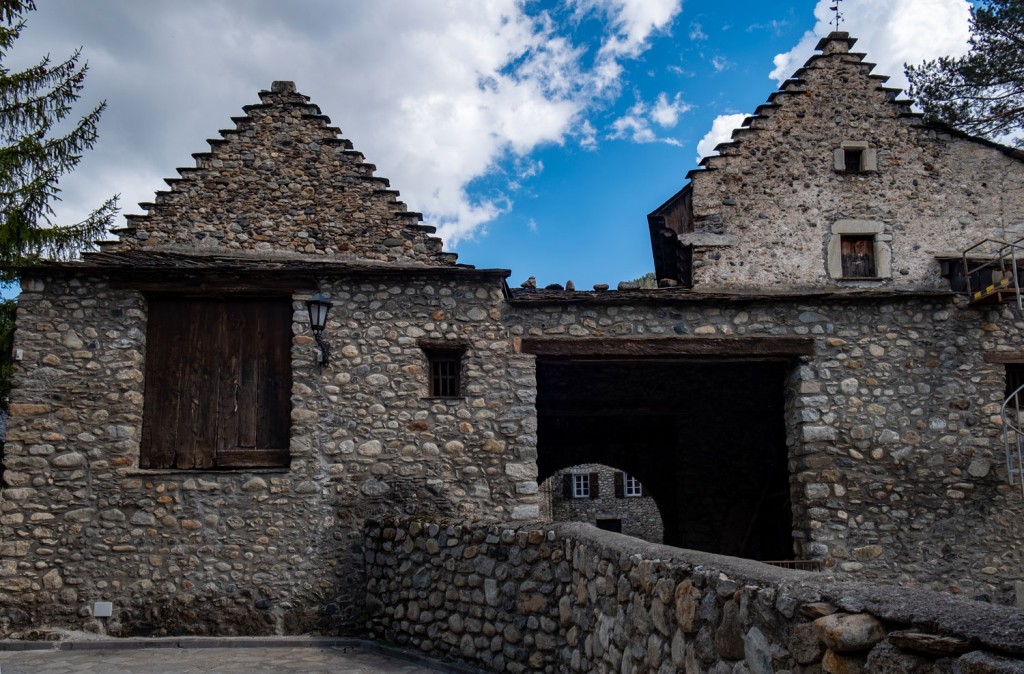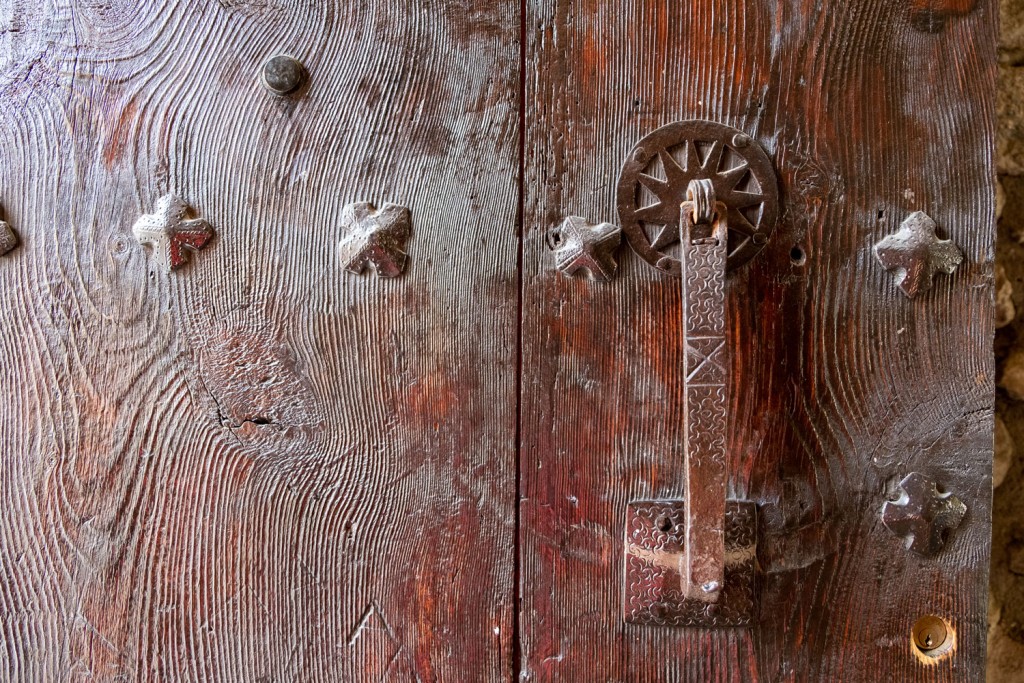Anciles town (‘Ansils’ in the local dialect), located in Benasque Valley, is considered one of the most beautiful towns in the peninsula, and no wonder. Even though Anciles resembles more a village than a town given its size, the marvellous houses ensemble and how they are preserved are worth visiting.
In order to arrive to Anciles leaving from Benasque, we can go for a pleasant walk of around 2 km long. The path starts in the bridge located at the entrance of Benasque and runs southwards next to Ésera River. We can also go by car through a narrow road that resembles a path between green fields named after the town —Paseo de Anciles—.
Noble houses
The small urban area, compact and extremely clean, mainly consists of large proprietary large houses dating back to the 16th and the 17th centuries. At that time, the powerful stockbreeders of Benasque decided to build their new mansions in Anciles, almost a Benasque borough. In this way, they pretended to show off about their material wealth.
Some of them show enormous engraving eaves, lovely lintel doors, wide patios and delicate forging crafts such as the crossbeams shaped like ears. The thick stony walls of the houses, the arches and the indoor landscaped patios are part of the scene. Everything is perfectly conditioned and care. And there is an architectural characteristic that stands out among many buildings: the stepped gable roofs.
The most characteristic examples are the houses of Barrau, Sebastián, Sort and Suprián, unmistakable given its robust square-based tower.


Anciles church
The Romanic origin church is located in the very heart of the town and it is well integrated in a small square surrounded by other houses.
This church is devoted to San Pedro Apostle. The tower was restored during the 17th century and the indoors baroque decoration dates back to the 18th century. Outside of it, we find the former local graveyard.
Regarding its distribution, the church consists of a rectangular nave split into three sections with a semicircular eastwards apse and three chapels on each side, a half-barrel vault with two half moon transverse arches that finish in the corbels located above the chapels. The church preserves the primitive Romanic apse made exclusively with river stones, very common in this area.
In the tower south wall, there is a window that lights up the atrium with an inscription from the date 1657. Likewise, it appears to be another date inscription from 1767 in the church door which forms a semicircular arch cut by local marble keystones with a moulded nut. The plant eastern gable presents a stepped contour.
The church modern door opens up in the west gable. Indoors, there is a crystallised grille located behind the entrance door.
Paseos por Anciles
Plenty of paths, tracks and routes are well known for being part of a tour that will lead us to the Middle Ages either leaving from Anciles, Benasque or Cerler. In addition, this area is located really close to Posets-Maladeta Nature Park where there are infinite routes and paths to enjoy the incomparable Pyrenees.

Anciles, Cerler, Benasque
This 11 kilometres tour runs between lovely settings of green fields, horses, gorgeous waterfalls and unique nature views.
Anciles, Eriste
This easy family itinerary runs from Anciles to the Ésera River crossing bridge located in Eriste town.
Selva de Conques
At the southwards Anciles exit, we will find the PR-HU 33 path (which joins later on the PR-HU 34) that will lead us to Casa Conques and Gardeta fountain. There, we can stop along the way and enjoy the views over Benasque Valley, the entrance to Aigüeta de Eriste Valley, Tozal de Box or Tucas de Ixeia.
Another good option is to follow the circular route that will lead us to Anciles, Conques, Eriste and Anciles again.
Forau de Aigualluts
This route is one of the most emblematic and recommended routes in the Pyrenees, that also has an odd background. It is an easy tour of no more than 1hour and 30 minutes that will show us the magnificence of Posets-Maladeta Nature Park. On it, magic comes true when the water coming from Aneto peak disappears underground to reappear again some kilometres away in a lovely waterfall known as Uelhs deth Joeu (Jewish eyes) in Arán Valley.
{{ planning.translation.title }}
-
· {{ partners_tipology.translation.title }} ({{partners_tipology.contents.length}})